Xiangsong Zhang
PET Tracer Conversion among Brain PET via Variable Augmented Invertible Network
Nov 15, 2023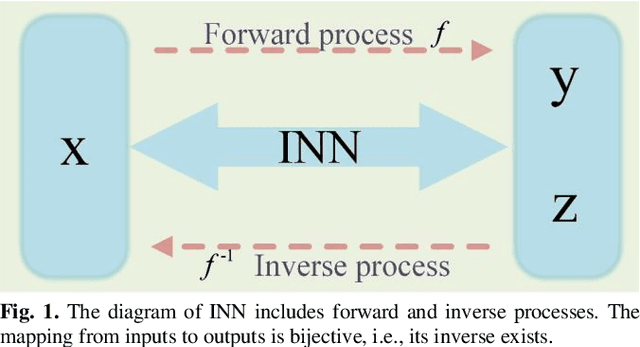
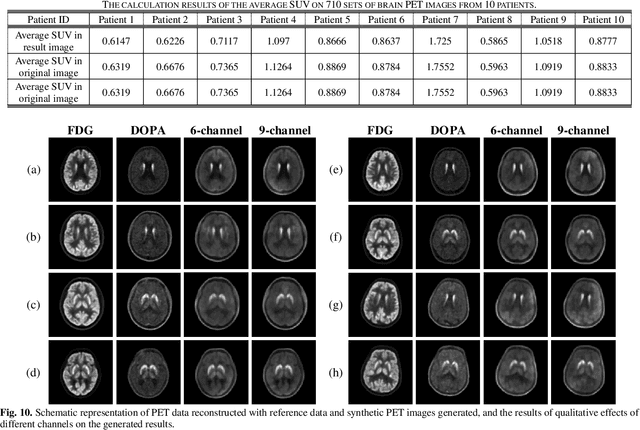
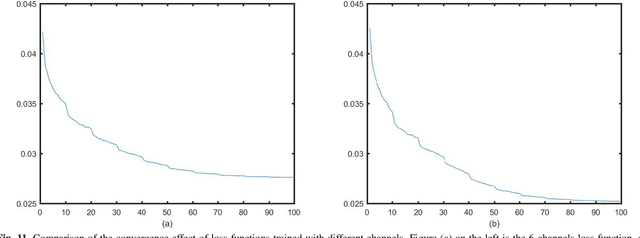
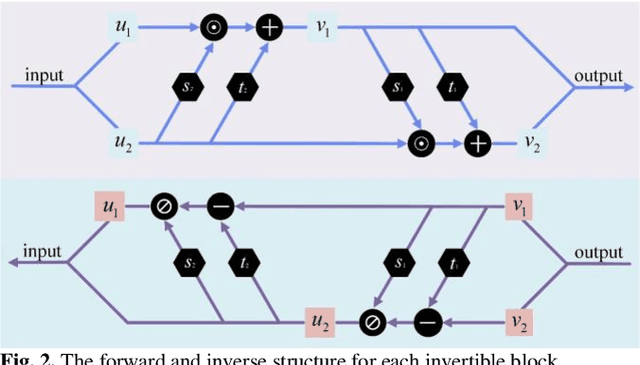
Abstract:Positron emission tomography (PET) serves as an essential tool for diagnosis of encephalopathy and brain science research. However, it suffers from the limited choice of tracers. Nowadays, with the wide application of PET imaging in neuropsychiatric treatment, 6-18F-fluoro-3, 4-dihydroxy-L-phenylalanine (DOPA) has been found to be more effective than 18F-labeled fluorine-2-deoxyglucose (FDG) in the field. Nevertheless, due to the complexity of its preparation and other limitations, DOPA is far less widely used than FDG. To address this issue, a tracer conversion invertible neural network (TC-INN) for image projection is developed to map FDG images to DOPA images through deep learning. More diagnostic information is obtained by generating PET images from FDG to DOPA. Specifically, the proposed TC-INN consists of two separate phases, one for training traceable data, the other for rebuilding new data. The reference DOPA PET image is used as a learning target for the corresponding network during the training process of tracer conversion. Meanwhile, the invertible network iteratively estimates the resultant DOPA PET data and compares it to the reference DOPA PET data. Notably, the reversible model employs variable enhancement technique to achieve better power generation. Moreover, image registration needs to be performed before training due to the angular deviation of the acquired FDG and DOPA data information. Experimental results exhibited excellent generation capability in mapping between FDG and DOPA, suggesting that PET tracer conversion has great potential in the case of limited tracer applications.
Synthetic CT Generation via Variant Invertible Network for All-digital Brain PET Attenuation Correction
Oct 03, 2023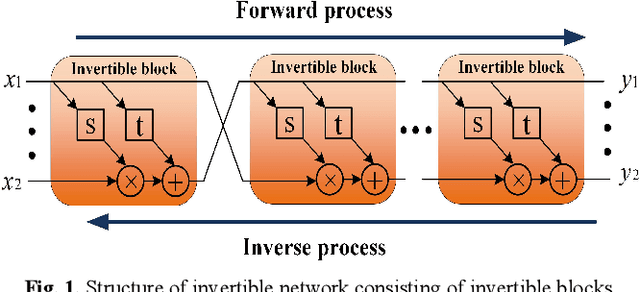
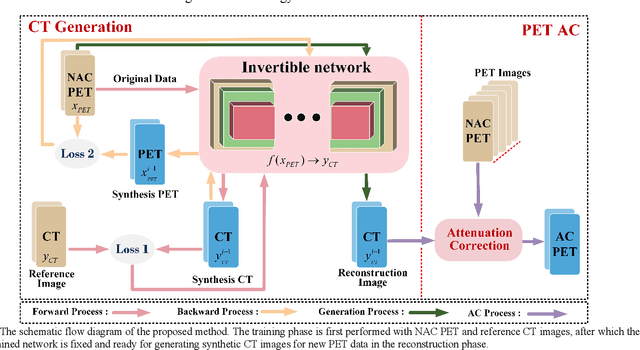
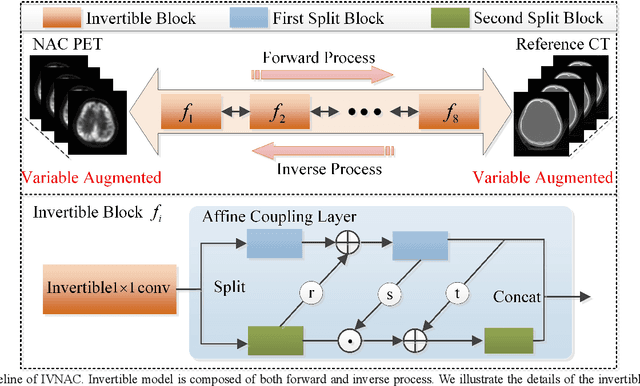
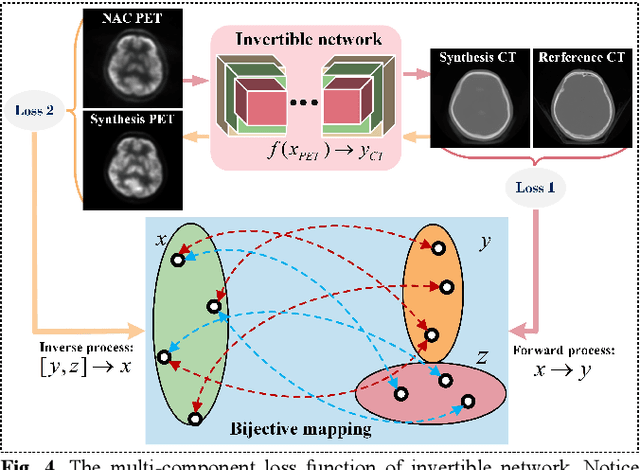
Abstract:Attenuation correction (AC) is essential for the generation of artifact-free and quantitatively accurate positron emission tomography (PET) images. However, AC of PET faces challenges including inter-scan motion and erroneous transformation of structural voxel-intensities to PET attenuation-correction factors. Nowadays, the problem of AC for quantitative PET have been solved to a large extent after the commercial availability of devices combining PET with computed tomography (CT). Meanwhile, considering the feasibility of a deep learning approach for PET AC without anatomical imaging, this paper develops a PET AC method, which uses deep learning to generate continuously valued CT images from non-attenuation corrected PET images for AC on brain PET imaging. Specifically, an invertible network combined with the variable augmentation strategy that can achieve the bidirectional inference processes is proposed for synthetic CT generation (IVNAC). To evaluate the performance of the proposed algorithm, we conducted a comprehensive study on a total of 1440 data from 37 clinical patients using comparative algorithms (such as Cycle-GAN and Pix2pix). Perceptual analysis and quantitative evaluations illustrate that the invertible network for PET AC outperforms other existing AC models, which demonstrates the potential of the proposed method and the feasibility of achieving brain PET AC without CT.
The changing rule of human bone density with aging based on a novel definition and mensuration of bone density with computed tomography
Aug 05, 2023
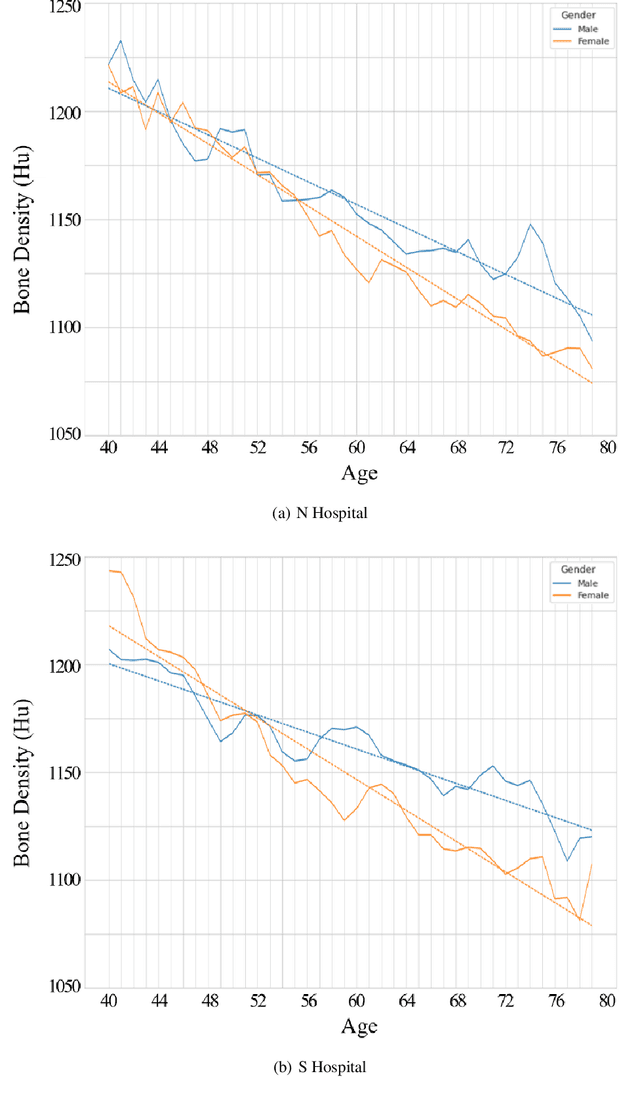


Abstract:Osteoporosis and fragility fractures have emerged as major public health concerns in an aging population. However, measuring age-related changes in bone density using dual-energy X-ray absorptiometry has limited personalized risk assessment due to susceptibility to interference from various factors. In this study, we propose an innovative statistical model of bone pixel distribution in fine-segmented computed tomography (CT) images, along with a novel approach to measuring bone density based on CT values of bone pixels. Our findings indicate that bone density exhibits a linear decline with age during adulthood between the ages of 39 and 80, with the rate of decline being approximately 1.6 times faster in women than in men. This contradicts the widely accepted notion that bone density starts declining in women at menopause and in men at around 50 years of age. The linearity of age-related changes provides further insights into the dynamics of the aging human body. Consequently, our findings suggest that the definition of osteoporosis by the World Health Organization should be revised to the standard deviation of age-based bone density. Furthermore, these results open up new avenues for research in bone health care and clinical investigation of osteoporosis.
 Add to Chrome
Add to Chrome Add to Firefox
Add to Firefox Add to Edge
Add to Edge